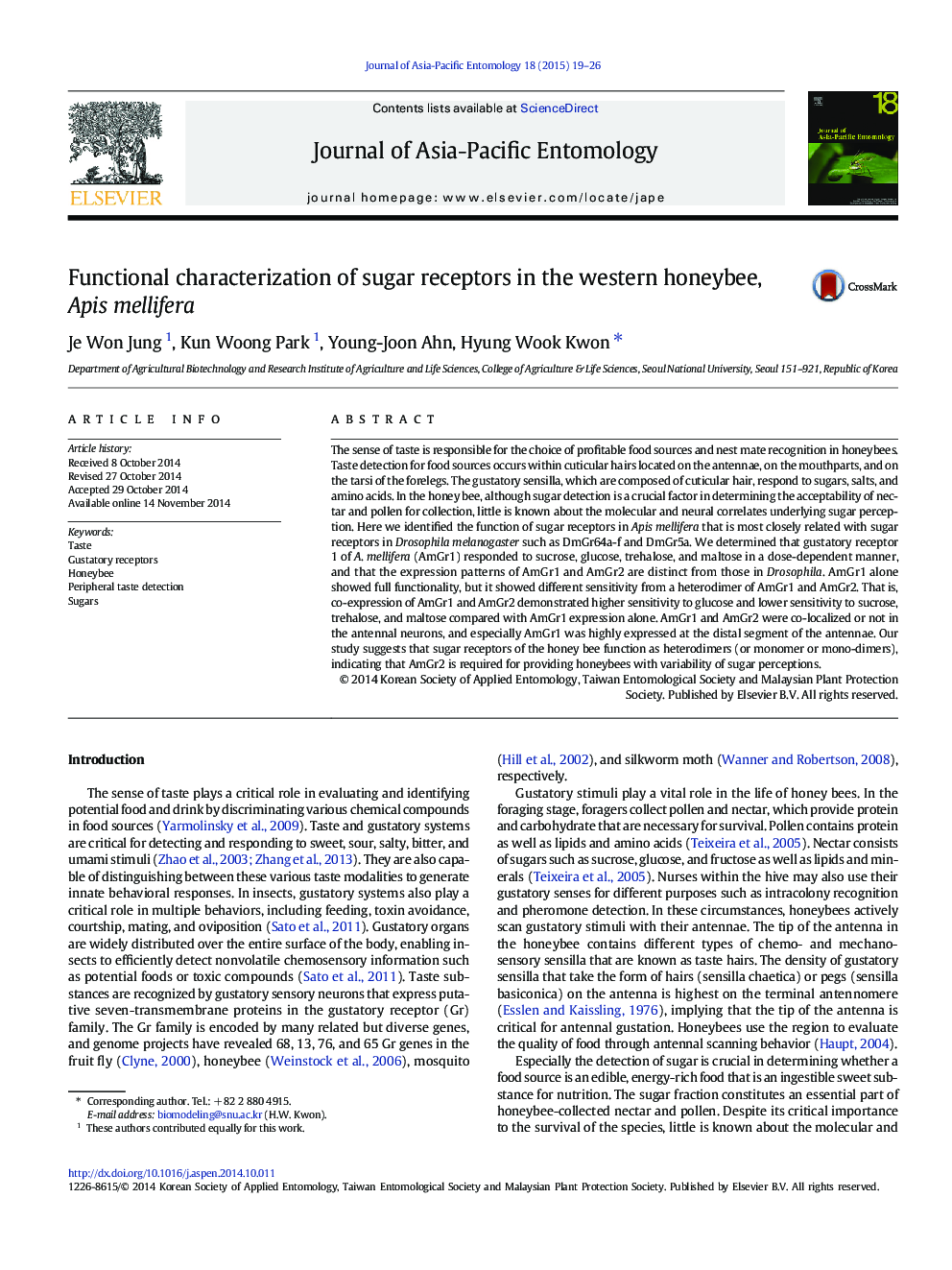| Article ID | Journal | Published Year | Pages | File Type |
|---|---|---|---|---|
| 4524624 | Journal of Asia-Pacific Entomology | 2015 | 8 Pages |
•We characterized sugar taste receptors from Apis mellifera.•We examined expression patterns of sugar receptors in antenna of Apis mellifera.•AmGr1 responded to sugar substances with dose dependent matters.•AmGr2 showed no responses to sugars.•AmGr1 and AmGr2 may be co-expressed and formed heterodimers.
The sense of taste is responsible for the choice of profitable food sources and nest mate recognition in honeybees. Taste detection for food sources occurs within cuticular hairs located on the antennae, on the mouthparts, and on the tarsi of the forelegs. The gustatory sensilla, which are composed of cuticular hair, respond to sugars, salts, and amino acids. In the honey bee, although sugar detection is a crucial factor in determining the acceptability of nectar and pollen for collection, little is known about the molecular and neural correlates underlying sugar perception. Here we identified the function of sugar receptors in Apis mellifera that is most closely related with sugar receptors in Drosophila melanogaster such as DmGr64a-f and DmGr5a. We determined that gustatory receptor 1 of A. mellifera (AmGr1) responded to sucrose, glucose, trehalose, and maltose in a dose-dependent manner, and that the expression patterns of AmGr1 and AmGr2 are distinct from those in Drosophila. AmGr1 alone showed full functionality, but it showed different sensitivity from a heterodimer of AmGr1 and AmGr2. That is, co-expression of AmGr1 and AmGr2 demonstrated higher sensitivity to glucose and lower sensitivity to sucrose, trehalose, and maltose compared with AmGr1 expression alone. AmGr1 and AmGr2 were co-localized or not in the antennal neurons, and especially AmGr1 was highly expressed at the distal segment of the antennae. Our study suggests that sugar receptors of the honey bee function as heterodimers (or monomer or mono-dimers), indicating that AmGr2 is required for providing honeybees with variability of sugar perceptions.
Graphical abstractFigure optionsDownload full-size imageDownload as PowerPoint slide
